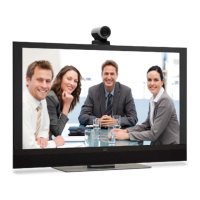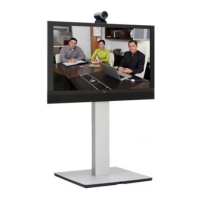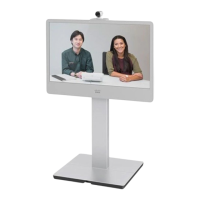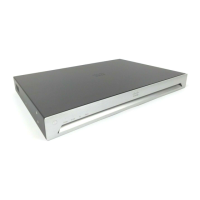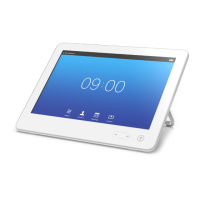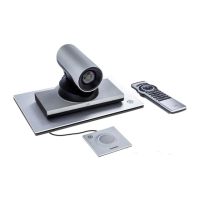D15119.02 MX700 and MX800 Administrator Guide TC7.2, AUGUST 2014. www.cisco.com — Copyright © 2014 Cisco Systems, Inc. All rights reserved.
66
Cisco TelePresence MX700 and MX800 Administrator Guide
Cameras settings
Cameras PowerLine Frequency
If your camera supports power line frequency anti-flickering, the camera is able to compensate
for any flicker noise from the electrical power supply. You should set this camera configuration
based on your power line frequency. If your camera supports auto detection of line frequency,
you can select the Auto option in the configuration.
All Cisco Precision cameras support both anti-flickering and auto detection of line frequency.
Auto is the default value, so you should change this setting if you have a camera that does not
support auto detection.
Requires user role: ADMIN
Value space: <Auto/50Hz/60Hz>
Auto: Allow the camera to detect the power frequency automatically.
50Hz: Use this value when the power line frequency is 50 Hz.
60Hz: Use this value when the power line frequency is 60 Hz.
Example:
Cameras PowerLine Frequency: Auto
Cameras SpeakerTrack Mode
This setting applies only when using a Cisco TelePresence SpeakerTrack 60 camera.
The SpeakerTrack 60 camera assembly consists of two cameras and uses an audio tracking
technique that finds and captures a close-up of the active speaker. When a change of speaker
is detected, the system can switch automatically between the two cameras to always show
the best camera view. Refer to the Cameras SpeakerTrack TrackingMode setting for different
switching modes.
Requires user role: USER
Value space: <Auto/Off>
Auto: Speaker tracking is switched on. The cameras in the camera assembly behave as one
integrated unit that finds the active speaker and dynamically chooses the best camera view.
Off: The cameras operate as two individual cameras. Speaker tracking is not used.
Example:
Cameras SpeakerTrack Mode: Auto
Cameras SpeakerTrack TrackingMode
This setting applies only when using a Cisco TelePresence SpeakerTrack 60 camera, and when
Cameras SpeakerTrack Mode is set to Auto.
Speaker tracking can operate in two modes: Fast tracking mode and Normal tracking mode.
The tracking algorithm reacts faster to detected changes in Fast tracking mode, thus the
camera view will change to a new speaker faster in this mode.
Requires user role: USER
Value space: <Default/Fast>
Default: Normal tracking mode.
Fast: Fast tracking mode.
Example:
Cameras SpeakerTrack TrackingMode: Default
Cameras Camera [1..7] Backlight
This configuration turns backlight compensation on or off. Backlight compensation is useful
when there is much light behind the persons in the room. Without compensation the persons
will easily appear very dark to the far end.
Requires user role: ADMIN
Value space: <Off/On>
Off: Turn off the camera backlight compensation.
On: Turn on the camera backlight compensation.
Example:
Cameras Camera 1 Backlight: Off
Cameras Camera [1..7] Brightness Mode
Set the camera brightness mode.
Requires user role: ADMIN
Value space: <Auto/Manual>
Auto: The camera brightness is automatically set by the system.
Manual: Enable manual control of the camera brightness. The brightness level is set using
the Cameras Camera Brightness Level setting.
Example:
Cameras Camera 1 Brightness Mode: Auto
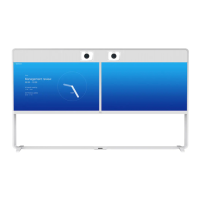
